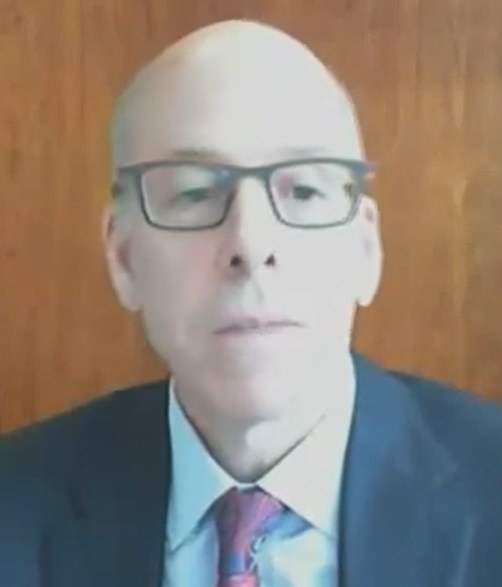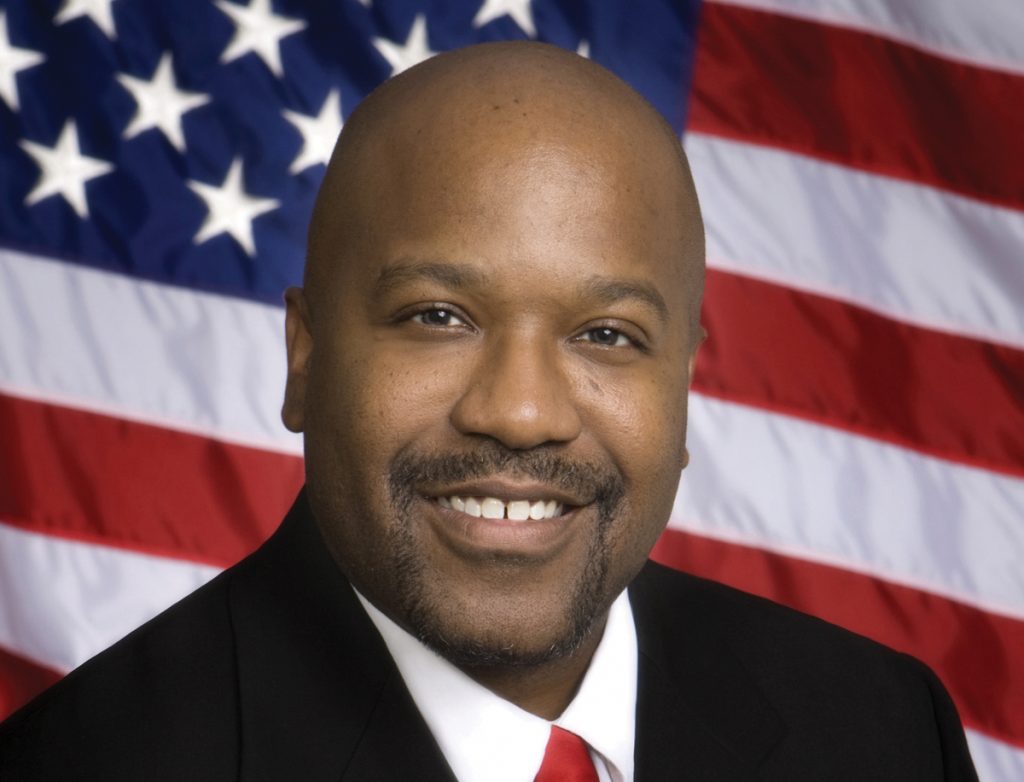A new leadership structure at the IRS will include a single deputy commissioner, instead of two, and four new IRS chief executives who will oversee taxpayer service, tax compliance, IT, and operations.
Plans for the new leadership depth chart were unveiled by IRS Commissioner Danny Werfel on Wednesday. The agency noted this is the first shake-up to its leadership structure in more than two decades.
Werfel, who took over as commissioner of the IRS last March, said these changes are intended to streamline operational efficiency and align with major transformation work underway at the agency through funding it received from last year’s Inflation Reduction Act, which includes improving customer service, upgrading its technological infrastructure, and going after wealthy tax cheats.

“With transformation work continuing to accelerate at the IRS, this is the right time to make these organizational adjustments that will support the agency’s improvements for taxpayers and provide the flexibility needed to add efficiency and expand collaboration across the agency,” he said. “Many foundational changes in tax administration have occurred since the last major IRS organizational change, and this new alignment will help us in our ongoing transformation work to modernize the nation’s tax system. This will improve our leadership model and streamline our internal processes for the benefit of taxpayers, the tax community, our employees, and ultimately the nation.”
The new leadership structure is expected to be put in place in early 2024. Werfel emphasized that the leadership changes would not immediately impact most IRS employees or their day-to-day work, just the reporting structure for these top positions. The IRS will be working with Congress, the National Treasury Employees Union, and other groups as plans progress on the changes.
The current IRS leadership structure dates back to 2000, when the agency recentered operations around taxpayer segments following enactment of the IRS Restructuring and Reorganization Act of 1998. Minor organizational changes were put in place in the years that followed, including adding a second IRS deputy commissioner in 2003 to oversee operations support.
“Our transformation work and previous reviews highlight how the current structure limits our ability to operate as an integrated organization with shared goals,” Werfel said. “The entire landscape around tax administration—including the economy, tax laws, and technology—have undergone major changes since the last IRS reorganization. The new structure will help the top leadership to work together to drive faster and more effective progress. It’s critical we deliver for taxpayers and the nation as we work to make important improvements at the IRS.”
Doug O’Donnell to serve as deputy IRS commissioner
A key change in the new organizational structure is shifting to a single deputy IRS commissioner model. Werfel noted a similar approach has worked successfully both inside and outside government, and it mirrors the model used at the Treasury Department.
The adjustment provides more specialization at the top of the IRS organization chart than the current two deputy commissioner model and reflects the importance of emerging priorities in the agency’s transformation work. The deputy commissioner for services and enforcement oversees tax season and IRS tax compliance work. The deputy commissioner for operations support handles IT functions as well as other critical mission support areas.
Werfel noted the new structure—with four chief executives reporting to the agency’s top leadership—will strengthen the senior team’s oversight capability and provide new flexibility with virtually no impact on IRS employees.
“This new governance model better supports the agency’s mission as well as giving heightened importance to these four key areas of taxpayer service, tax compliance, IT, and operations,” Werfel said. “These are critical areas we need to focus on, and this structure will reflect those priorities.”

The new IRS deputy commissioner role will be filled by Doug O’Donnell, current deputy commissioner for services and enforcement. O’Donnell, who served as acting IRS commissioner from November 2022 through March 2023, has spent more than 37 years at the IRS in a variety of roles.
Prior to becoming deputy commissioner for services and enforcement in 2021, O’Donnell served as the commissioner of the IRS Large Business and International (LB&I) division for nearly six years.
He joined the IRS in 1986.
Four new chiefs: Corbin, Maloy, Uppal, and Krause
Reporting to O’Donnell will be four new IRS chief positions and IRS Online Services. O’Donnell and the new chiefs—Ken Corbin, Heather Maloy, Rajiv Uppal, and Melanie Krause—will all work closely with Werfel.
Ken Corbin: Currently commissioner of the IRS Wage and Investment (W&I) division, Corbin will lead the taxpayer service group. The new taxpayer service area will include many of the major taxpayer functions currently handled by Corbin’s W&I division, such as handling the filing season work and taxpayer-facing operations, including toll-free operations, tax return processing centers, taxpayer assistance centers and tax forms, taxpayer correspondence and publication development.

For more than three decades at the IRS, Corbin has served in many different roles with serving taxpayers as a key component. Corbin began his IRS career in 1986. During his career, Corbin has acquired an extensive background in IRS campus operations from 10 years in submission processing, three in accounts management, six in compliance services, and three in taxpayer advocate services, as well as numerous executive assignments across the agency.
“This new position will continue to give attention on taxpayer service as a top priority at the IRS,” Werfel said. “Improving our services to taxpayers—whether through tax processing, on the phone, online, in person, or other ways—is a foundational goal of our transformation work.”
Heather Maloy: Currently the IRS chief of staff, Maloy will oversee IRS compliance operations, including in LB&I, the Small Business/Self Employed division, the Tax Exempt and Government Entities division, IRS Criminal Investigation, the Office of Professional Responsibility, the Return Preparer Office, and the Whistleblower Office.

Maloy has held a number of roles at the IRS and in private practice. Among her previous leadership positions at the IRS, Maloy served as the LB&I commissioner as well as associate chief counsel for both the Income Tax and Accounting and Passthroughs and Special Industries divisions and assistant to the commissioner.
With Maloy moving into this new position, Jonathan Warsh, who currently serves as senior counselor to the IRS commissioner, will serve as acting IRS chief of staff.
Werfel noted that creating this new compliance chief position serves as a critical step given the agency’s focus on ensuring fairness in the tax system and increasing focus on noncompliance among higher-income taxpayers, partnerships, and corporations.
“Compliance is an area where the IRS will be focused on during transformation work. Having a single leadership role focused on this will help our efforts going forward in this critical area for tax administration,” Werfel said.
Rajiv Uppal: Uppal will serve in the role of chief information officer when he joins the IRS in 2024. The IRS announced his selection in November. He currently serves as the director of the Office of Information Technology and chief information officer for the Centers for Medicare and Medicaid Services, part of the U.S. Department of Health and Human Services. He brings more than 25 years of IT expertise to the IRS from both the public and private sectors.

The new chief position will include the current IRS Information Technology division, which is currently led by Kaschit Pandya, the IRS’s chief technology officer and acting chief information officer.
“Our work in the technology arena is critical to our current work on everything from filing season to our phone lines and our online tools,” Werfel said. “And we must continue to make foundational improvements in this area to ensure the success of our transformation work and bringing new tools to help taxpayers. Creating this position will be critical to making sure information technology works closely with our business units and our transformation teams to create successes for taxpayers and the tax system, now and in the future.”
Melanie Krause: She will serve as chief operating officer. Krause joined the IRS in October 2021 and is currently chief data and analytics officer where she also leads research, applied analytics, and statistics (RAAS).

Krause serves as co-lead of the Data and Analytics Strategic Integration Board, where she works to advance areas of strategic importance to the agency, including using artificial intelligence and other advanced analytics.
Krause also served as acting deputy commissioner for services and enforcement from November 2022 to March 2023 and has worked at the U.S. Government Accountability Office and the Department of Veterans Affairs Office of Inspector General.
Offices under the chief operating officer include:
- Human Capital Office
- Chief Financial Office
- Procurement
- Facilities Management and Security Services
- Privacy Governmental Liaison and Disclosure
- RAAS
- Risk Office
“The operating chief function will continue working to expand and enhance these vital areas at the IRS and to tax administration and work closely with the IRS business units to support our tax administration goals,” Werfel said. “This alignment will allow the chief operating officer to fully focus on these high-priority areas in ways that we were unable to under the old structure.”
Thanks for reading CPA Practice Advisor!
Subscribe Already registered? Log In
Need more information? Read the FAQs



![natural_disasters_list_1_.56117a5e5df03[1]](https://www.cpapracticeadvisor.com/wp-content/uploads/2021/12/natural_disasters_list_1_.56117a5e5df03_1_.61c1db14bf0ea.png)
